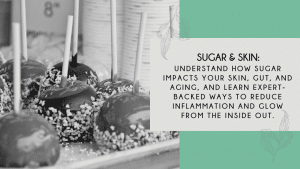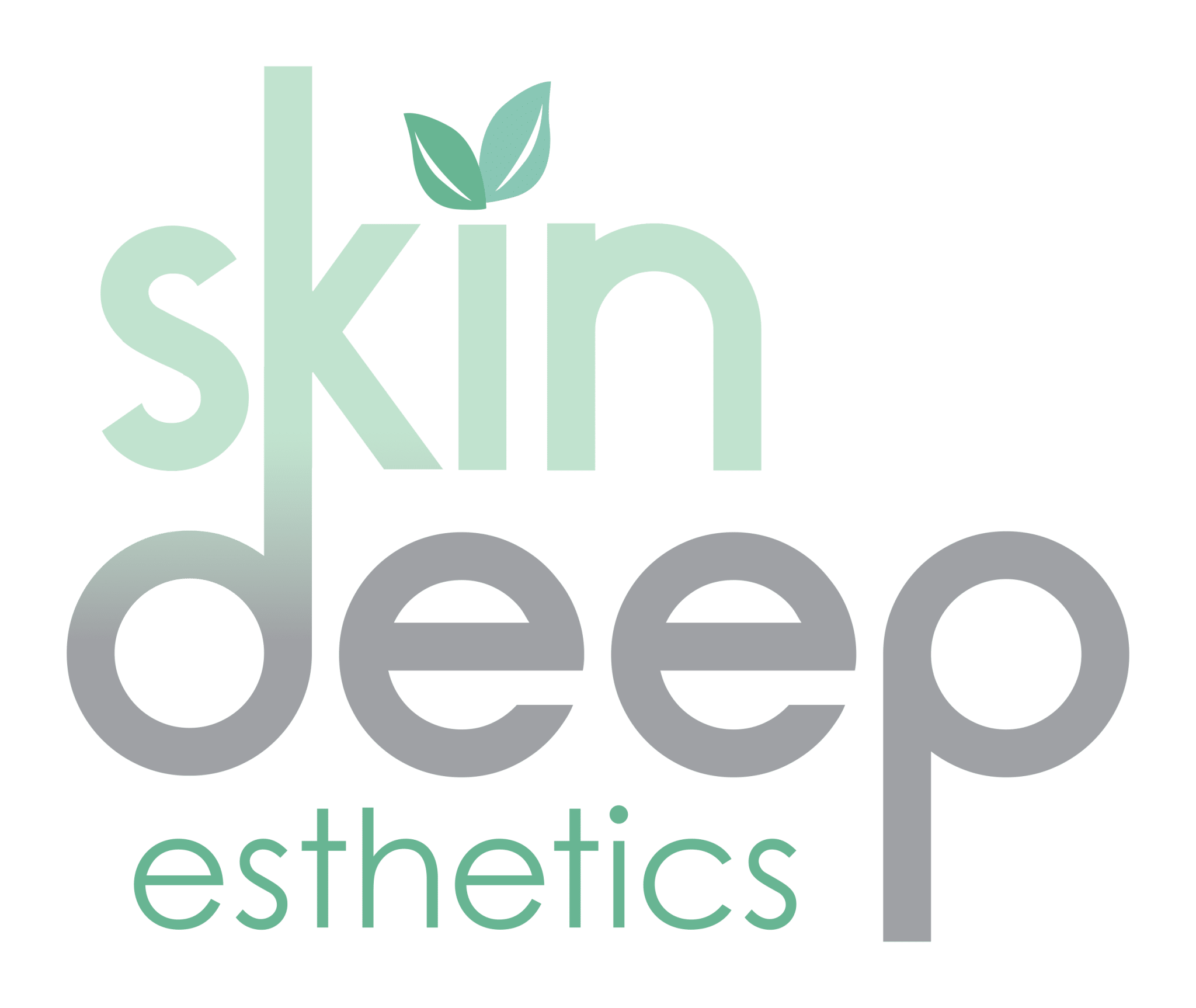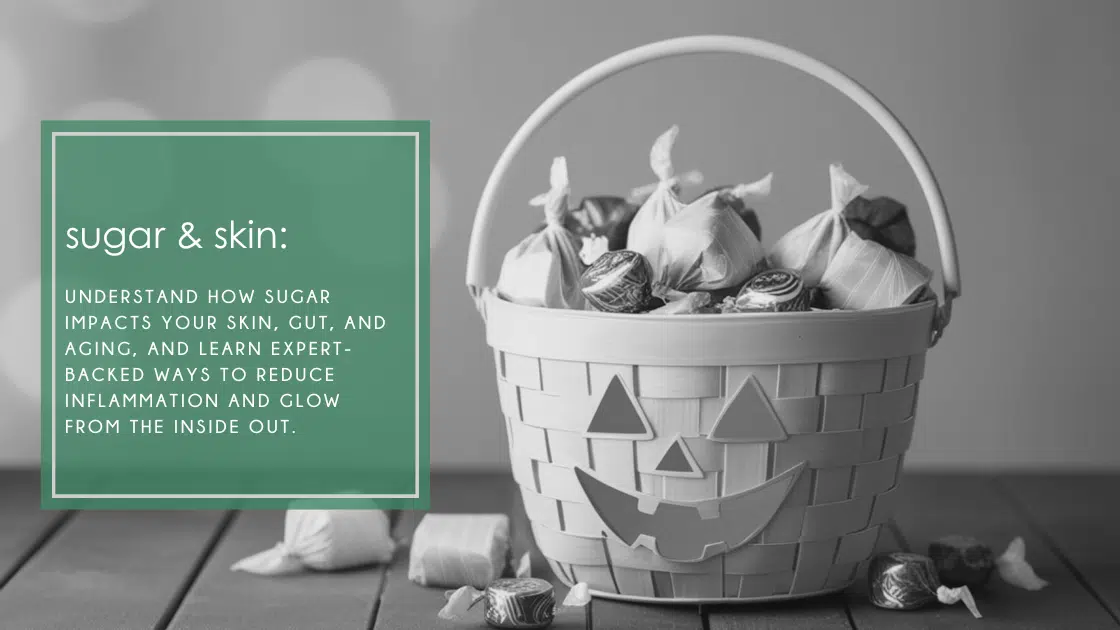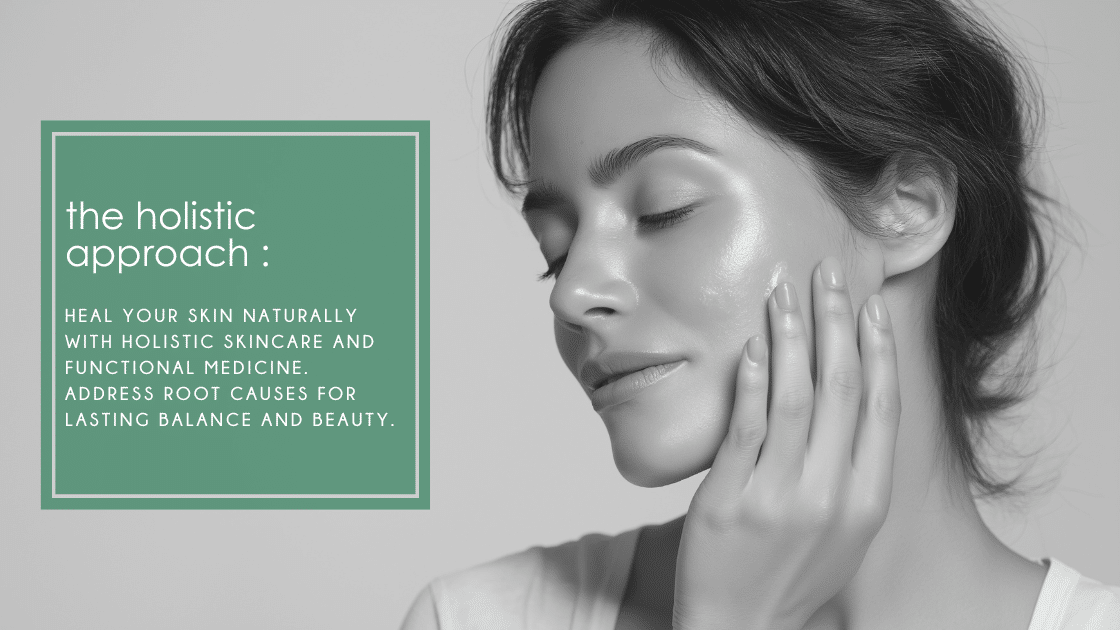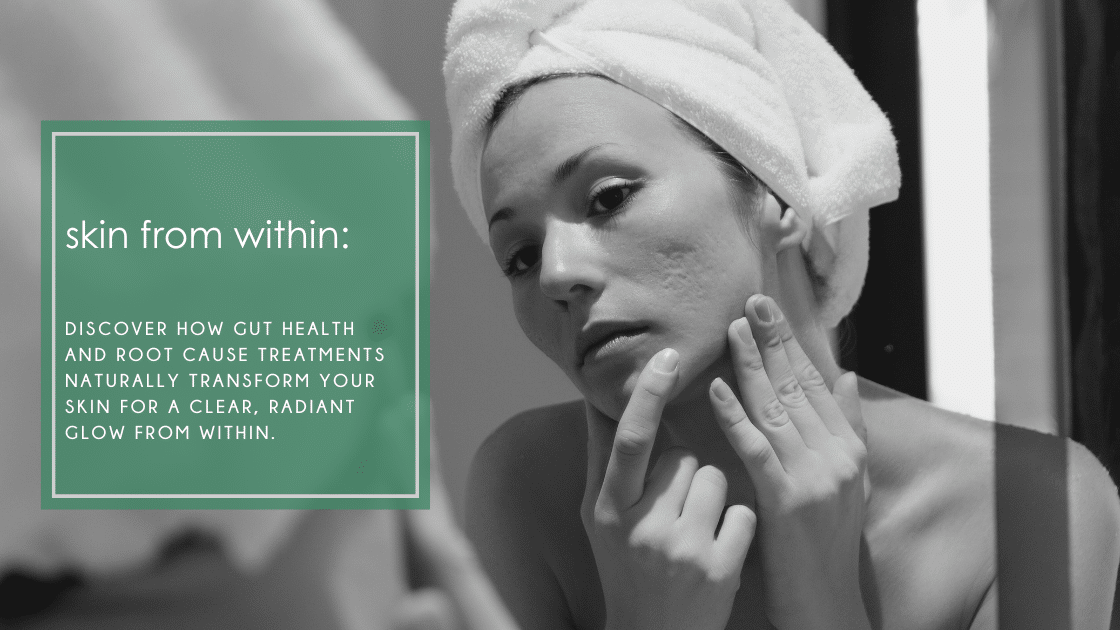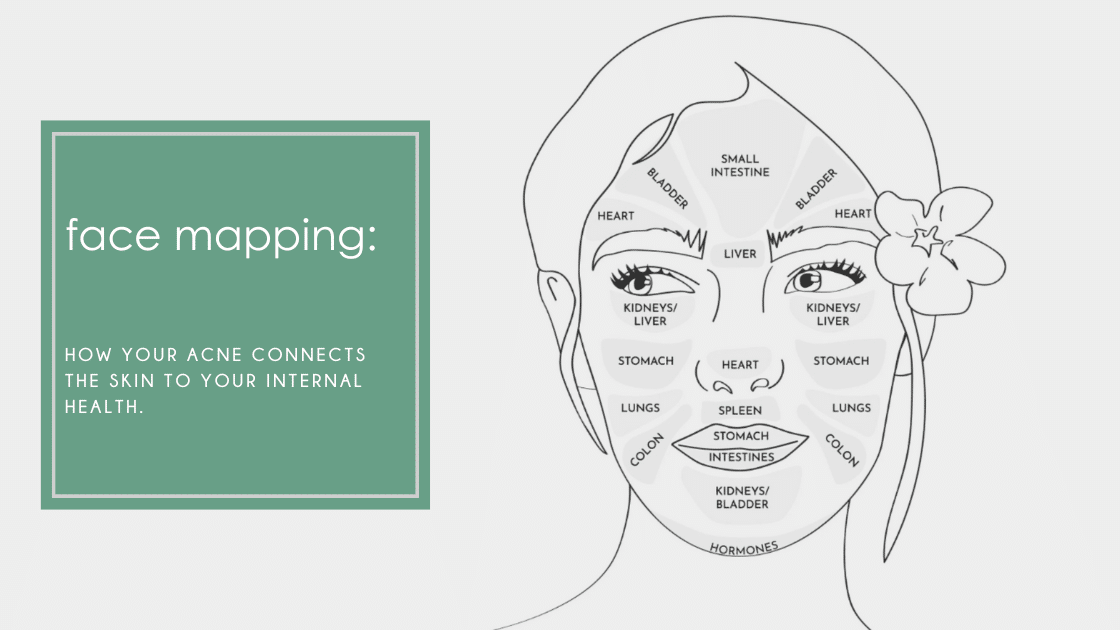Skin, Gut, and Sugar
Sugar: Craving Sweets = Breakouts? Here’s Why…
Sugar creates inflammation, which our body purges through our skin. Today, we’ll discuss how sugar affects the body and skin, learn about a process called glycation, share some tools to help you eliminate sugar from your diet (yes, it is possible!) and support your skin.
What Is Sugar?
While cane sugar is the most common, there are many variations of sugars, and some contain sugars we don’t even recognize on the ingredient list. Our bodies are not designed to process high levels of sugar, and if exceeded, it can trigger inflammation in the body. This inflammation often targets the skin and results in acne, glycation, and various health concerns.
Artificial Sugars
Many people try to avoid/eliminate sugar, yet we seek out replacement or alternative sweeteners to feed our sugar addiction. Food companies have created artificial sweeteners, such as aspartame, saccharine, sucralose, and stevia. While the FDA has classified these sugars as Generally Recognized As Safe (GRAS), some studies link artificial sweeteners to health issues such as diabetes, cancer, and obesity.
In an article published by the National Library of Medicine, researchers noted that “Extensive marketing by the manufacturers has led to overuse, and sometimes even abuse of NNS (nonnutritive sweeteners), by the population. They are believed to suppress hunger and appetite, leading to beneficial effect on body weight and cardiometabolic profile, and are consumed by both lean and obese alike.” The article continues to explain that our bodies don’t metabolize these artificial sugars, yet we continue to consume them. Long-term consumption can lead to additional health issues.
Is Sugar Addictive?
The truth is that sugar behaves like a drug. Sugar is MORE addicting than cocaine and food companies know it! Manufacturers hide sugars in our foods because they know that once we get addicted, we will continue to consume these foods. It may not be labeled as one, but its effects cluster around addiction, cravings, and long-term damage. According to Dr. Mark Hyman, “Mounting scientific evidence clearly proves that sugar — and flour, which raises blood sugar even more than table sugar — is biologically addictive. In fact, it’s as much as eight times more addictive than cocaine.”
In fact, sugar can trigger the same reward circuits in your brain that more notorious substances do. Manufacturers know this, which is why sugar hides in so many processed foods. If you’re trying to escape this cycle, realizing the addictive component is the first step toward freedom.
Sugar Impacts Our Body
Sugar And our Gut Microbiome
Our gut is home to a variety of bacteria, known as our microbiome. The foods we eat directly affect our gut microbiome in the way it processes and breaks down foods. When we overload on processed foods and high sugar, that balance gets disrupted, leading to Dysbiosis.
Dysbiosis
Dysbiosis is an imbalance of bacteria as well as the function of our gut microbiome. It is characterized by bloating, cramping, gas, constipation, and/or diarrhea. We discuss dysbiosis in our Podcast if you want to learn more about how sugar affects the gut. A study by MDPI on the effects of sugars on our gut microbiome discusses two ways in which sugar impacts the gut microbiome.
1 Sugar affects the balance of bacteria
The most important thing to know about our gut is that we have a balance of certain bacteria that help fight viruses and break down food. GI issues occur when that balance is disrupted. MDPI says, “Basically, the gut features a complex system of many species of bacteria. The four dominant families are Firmicutes, Bacteroidetes, Proteobacteria, and Actinobacteria. A high intake of sugar modifies the ratio between Proteobacteria and Bacteroides. This happens when excess sugar is not absorbed in the small intestine and is consumed by Proteobacteria that utilize simple carbohydrates, thus increasing their numbers at the expense of Bacteroides that break down complex carbohydrates.”
2 Sugar reduces short-chain fatty acids
We hear the word fat and think fat is bad; it’s quite the opposite. Short-chain fatty acids (SCFAs) are produced when our gut digests dietary fiber in the form of fermentation. They are crucial for the integrity of our gut. MDPI says, “excessive sugar intake may ‘directly affect the composition and functionality of the gut microbiota’. This accordingly means the gut’s ability to maintain the intestinal barrier will be affected. Therefore, its immune functions and nutrient absorption capabilities will be reduced.”
How Did This Happen?
As you’re reading this, you might be thinking about how sugar is allowed to be in pretty much everything we eat? It starts with the regulatory food frameworks like the FDA, which many of us trust as a reliable source to protect our health. According to Dr. Mark Hyman, “U.S. Dietary Guidelines provide no limit for added sugar, and the U.S. Food and Drug Administration (FDA) still lists sugar as a ‘generally regarded as safe’ (GRAS) substance. That classification lets the food industry add unlimited amounts of sugar to our food.” It’s like the FDA allowing manufacturers to hide toxic ingredients under the term “fragrance.” Therefore the system allows sugar to hide in everything, making it tough for our bodies (and skin) to cope.
Sugar and the Skin
Your skin and gut health are tied together. This is called the gut-skin axis. When it comes to the skin, our largest organ, it isn’t just a barrier: it’s often a mirror of what’s happening inside your body. It even functions as a detox organ; pores, sweat glands, and lymphatic drainage all help clear waste and toxins from your system. This is another topic we discuss extensively in our Podcast.
How Sugar Can Cause Acne
Have you ever heard the old wives’ tale that says “eating chocolate causes acne”…
I remember growing up thinking that! The question becomes, is that true? For many years, I have been studying and learning about gut health. I am studying functional medicine, and it is amazing the amount of information that is proving that sugar creates gut inflammation and correlates to acne. PubMed states, “In terms of whether glycemic content (GI, load, carbohydrates, chocolate, soda, sweets, etc) affects acne, a majority (77%) of the identified observational studies, independent of prevailing culinary traditions in the country of origin, supported an association between dietary glycemic content and acne. Based on this evidence, we concluded that despite conflicting articles, high-GI and increased-glycemic content diets can exacerbate acnegenesis and acne severity, whereas the adoption of a low-GI diet may benefit acnegenesis, decrease the number of lesions, and alleviate acne severity, irrespective of the geographic region or country.”
How Sugar Can Age Us
Excess sugar can accelerate visible skin aging through a process called glycation. Here’s how it works: sugar molecules bind to proteins (like collagen and elastin), forming harmful structures called Advanced Glycation End Products (AGEs). These damage the skin’s structural proteins and speed up aging signs. Simply put, sugar breaks down amino acids, essential building blocks for our cells. Most don’t consume enough protein to replenish their amino acids, resulting in premature aging. Serious diseases such as Diabetes, Alzheimer’s, and Cardiovascular Diseases link to glycation.
How Glycation Affects Skin Aging
Unlike traditional aging, which appears as fine lines around the eyes, forehead, and mouth, glycation has a more dramatic effect on the skin. PubMed defines, “The aging of the skin is first manifested as the aging of cells. Studies show that with aging, the proliferation and vitality of skin fibroblasts are reduced, leading to a decrease in the secretion of elastin fibers, collagen fibers, reticular fibers, and extracellular matrix in the dermis layer of the skin. This will result in a deepening and lengthening of skin wrinkles, pigmentation, and other manifestations of aging”.
Glycation shows up as…
- Cross-hatched wrinkles
- Textured skin around the mouth that appears as large pores
- Loose skin with a wrinkle pattern instead of straight wrinkle lines.
What Can You Do To Limit Sugar Intake?
My best piece of advice is to stop eating it, and trust me, it’s not that easy. In this week’s episode of our Podcast, I talk about my journey to eliminating sugar, and it was one of the hardest things I’ve ever done. Until you try to stop eating it, you don’t realize how addictive it is. But it is possible to kick the sugar cravings…you have to decide that you’re not going to let your body feel terrible all the time.
Here are practical steps for your clear-skin diet and healthier lifestyle:
- Identify hidden sugars in your diet (sodas, flavored yogurts, granola bars, sauces).
- Swap refined carbs for low-glycemic choices (whole grains, legumes, vegetables).
- Pair sugary treats with protein or healthy fat
- Hydrate well, support detox pathways (sweating, proper sleep, movement).
- Work with a skin-care professional to support your skin’s recovery from inflammation and glycation.
Ready to Get Started?
If you’re looking for some support with your skin or gut, please head over to our website and book your first appointment today. And if you haven’t had a chance to check out our podcast, we would love for you to listen! Got questions? Please drop them in the comments below.
